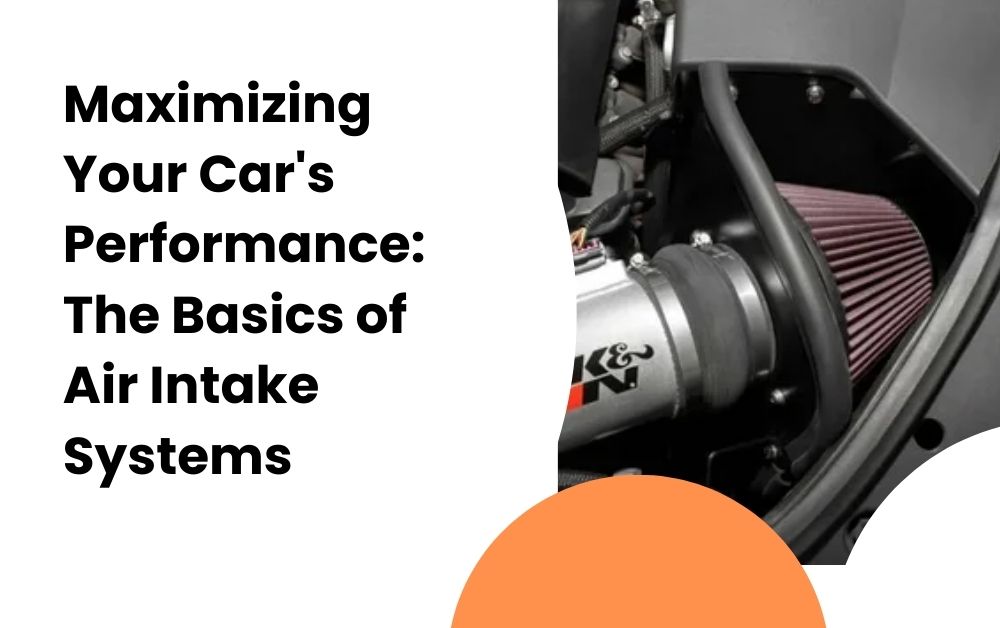Hitting the road with power and efficiency is every driver’s dream. But did you know that something as seemingly simple as your car’s air intake system for car can make a significant difference in achieving that dream? In this guide, we’ll break down the fundamentals of air intake systems for cars, helping you understand their importance and how they work to optimize your vehicle’s performance.
Understanding the Air Intake System
Your car’s air intake system may not be the flashiest component, but it plays a crucial role in its overall performance. At its core, the air intake system is responsible for supplying your engine with the air it needs to combust fuel efficiently. Think of it as your car’s respiratory system, providing the oxygen necessary for combustion to occur.
Components of an Air Intake System
Let’s dissect the air intake system further by examining its key components:
- Air Filter: Acting as the first line of defense, the air filter prevents harmful contaminants such as dust, dirt, and debris from entering the engine. A clean air filter ensures that only clean air reaches the engine, promoting optimal performance and longevity.
- Mass Airflow Sensor (MAF): This sensor measures the amount of air entering the engine and relays this information to the engine control unit (ECU). The ECU uses data from the MAF sensor to adjust fuel delivery, ensuring the ideal air-to-fuel ratio for combustion.
- Throttle Body: Located between the air filter and the intake manifold, the throttle body regulates the amount of air entering the engine based on driver input. By controlling the airflow, the throttle body contributes to fuel efficiency and engine responsiveness.
- Intake Manifold: The intake manifold distributes the air evenly to each cylinder of the engine. It plays a crucial role in optimizing airflow and maintaining consistent engine performance across all cylinders.
- Intake Tube: The intake tube connects the air filter to the throttle body, allowing the filtered air to flow into the engine. It’s essential for ensuring a smooth and unrestricted airflow path.
How Does the Air Intake System Improve Performance?
Now that we’ve covered the components let’s delve into how the air intake system enhances your car’s performance:
- Increased Airflow: Upgrading your car’s air intake system can improve airflow, allowing more oxygen to reach the engine. With ample oxygen available, the combustion process becomes more efficient, resulting in increased horsepower and torque.
- Enhanced Engine Sound: Many aftermarket air intake systems are designed to produce a more aggressive engine sound, giving your car a sportier feel. While this may not directly impact performance, it can certainly enhance the driving experience.
- Improved Throttle Response: A high-performance air intake system can reduce airflow restrictions, leading to improved throttle response. This means that when you press the accelerator, your car responds more quickly, delivering power precisely when you need it.
- Potential Fuel Efficiency Gains: By optimizing airflow and achieving a better air-to-fuel ratio, some drivers experience slight improvements in fuel efficiency after installing a performance air intake system. While the gains may vary depending on driving habits and other factors, every bit of efficiency counts.
Choosing the Right Air Intake System
When it comes to selecting an air intake system for your car, several factors come into play:
- Compatibility: Ensure that the air intake system is compatible with your specific make and model of car. Different vehicles may require different intake configurations, so it’s essential to choose one that fits seamlessly.
- Quality Construction: Opt for air intake systems constructed from high-quality materials such as aluminum or carbon fiber. These materials are durable and resistant to heat, ensuring longevity and optimal performance.
- Performance Gains: Research the performance gains offered by different air intake systems. While some may focus on horsepower and torque enhancements, others may prioritize throttle response or engine sound. Choose the system that aligns with your performance goals.
- Budget Considerations: Air intake systems come in a range of prices, so consider your budget when making a decision. While high-end systems may offer superior performance, there are also more affordable options that provide significant gains without breaking the bank.
Installation and Maintenance
Installing an aftermarket air intake system is a relatively straightforward process that can often be completed with basic hand tools. However, if you’re not comfortable performing the installation yourself, it’s best to seek professional assistance to ensure proper fitment and functionality.
Once installed, regular maintenance of your air intake system is crucial to ensure optimal performance. This includes periodic inspection and cleaning of the air filter, as well as checking for any signs of damage or wear in the intake components.
Conclusion
Your car’s air intake system may seem like a small piece of the puzzle, but it plays a significant role in determining its performance and efficiency. By understanding how the air intake system works and the benefits it can provide, you can make informed decisions to maximize your car’s potential on the road. Whether you’re looking for increased horsepower, improved throttle response, or simply a more exhilarating driving experience, upgrading your air intake system is a step in the right direction.
For more insightful articles related to this topic, feel free to visit toppersblogs


